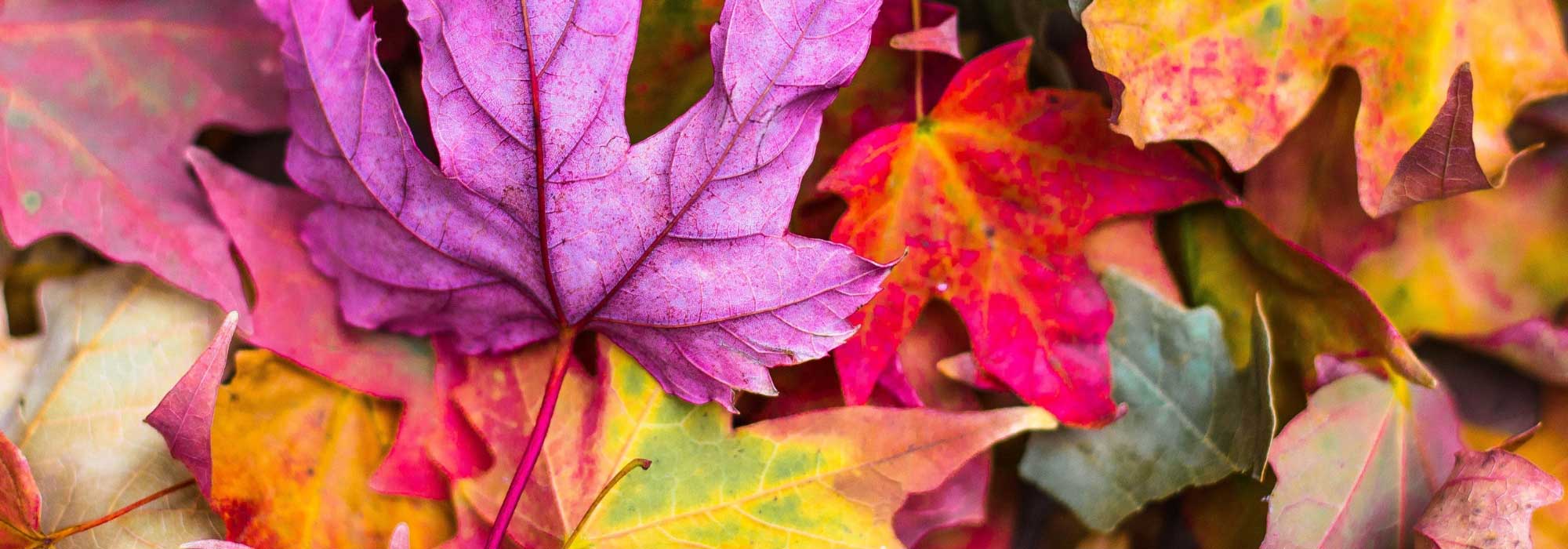
The most beautiful trees and bushes with autumn colouring
Our selection
Contents
In autumn, the foliage of trees is enriched with vibrant and shimmering hues in colour ranges that are only seen during this season. The colours are so extraordinary that they deserve to have plants chosen based solely on this criterion.
Here are some of the most spectacular trees and bushes in terms of colour intensity and the duration of their blaze.
Japanese maples
Japanese Maples are small, slow-growing trees that typically reach heights of between 1 and 5 m. There are hundreds of cultivars, mainly derived from the species palmatum or japonicum, and they all offer exceptional foliage both in terms of their graphic shape and their colours throughout the season, encouraging the creation of a true collection when conditions allow! The spreading crown with its dark, twisted branches literally ignites when the days are still mild and the nights cool, displaying endless shades of orange-yellow and bright red for several weeks. The colouring of the young shoots in spring is equally rewarding. With their spreading branches, Japanese maples also provide a light shade that beautifully filters sunlight through their foliage, where sparkling little winged fruits dance, bright red in spring!
For gardens with chalky soil, do not hesitate to grow one of these remarkable specimens in a large pot filled with acidophilous potting soil in a cool, partially shaded position, to enjoy this autumn magic in all circumstances.
To learn everything about Japanese Maples, discover the dedicated file:
“Japanese Maple – Planting, Pruning and Maintaining”
Discover other Shrubs with coloured autumn foliage
View all →Available in 0 sizes
Available in 1 sizes
Available in 1 sizes
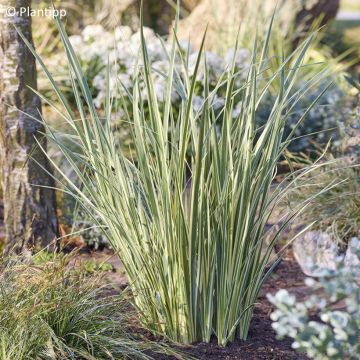
Available in 1 sizes
Available in 1 sizes
Available in 1 sizes
Available in 1 sizes
Available in 2 sizes
Available in 1 sizes
Available in 1 sizes
The Persian parrotia 'Persian Spire'
‘Persian Spire’ is a new variety of Parrotia known as “Ironwood”. With a more compact growth, it can be planted even in a modest-sized garden. This small tree, reaching 10 m, typically takes up a lot of space in width with its trailing branches that reach the ground, but here it maintains a narrow habit of 75 cm wide and 2.50 m tall after 10 years.
This advantage is complemented by an exceptional leaf coloration that starts from purple at bud burst period, transforming into bright green edged with violet in summer, and culminating in a breathtaking display of purple, golden yellow, orange, and crimson red by the end of August. It seems that the brilliance of the foliage is enhanced in slightly acidic soil and sunny exposure.
The Persian ironwood thrives well in dry, cold soil during winter, even when compacted. It also makes an excellent specimen in a pot due to the architecture of its branches and its beautiful peeling bark, similar to that of plane trees, adorned with small red clusters before leafing out.
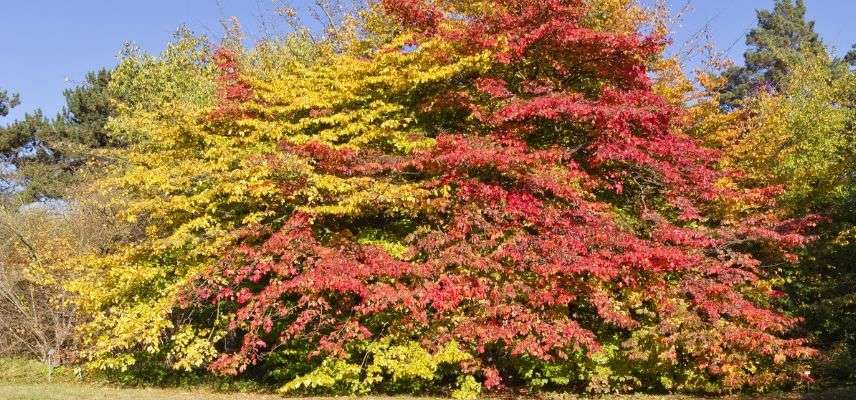
Euonymus alatus or Winged Spindle
Euonymus alatus known as “Winged Spindle” is a bush with soft green foliage quite ordinary, supported by branches covered with corky wings that gains its full value in autumn when it ignites with dark red and flamboyant purple tones. It does not pass through intermediate yellow tones but forms a mass of crimson red that creates a striking contrast against golden evergreen foliage such as that of Elaeagnus ebbingei Maryline Abrela or blueish like the small blue spruce Picea pungens Jeddeloh. The winged spindle has a spreading rounded habit up to 2 m in all directions with fairly airy, opposite and lanceolate foliage, 5 to 8 cm long. While the flowering goes unnoticed, except by pollinators, it makes up for it in summer with an original bright pink fruit resembling a bishop’s hat. Perfectly hardy, it grows effortlessly in all well-drained soils, even dry, in full sun or partial shade.
To learn everything about Spindles, discover the dedicated file:
“Spindle, euonymus – Planting, pruning and maintaining”
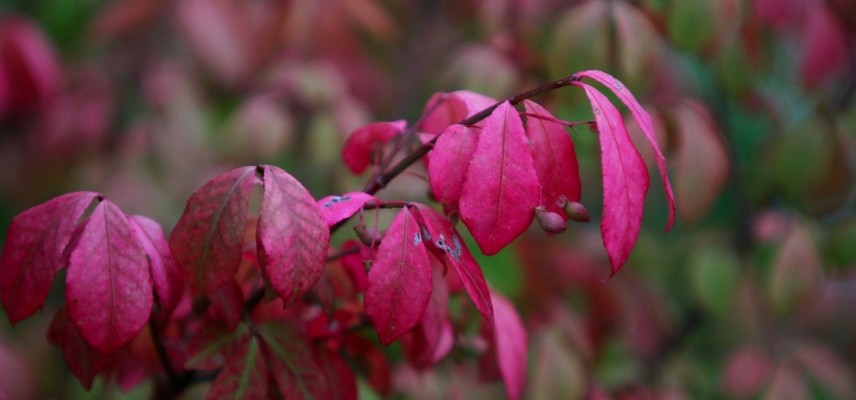
Carpinus betulus 'Orange-Retz'
Hornbeam, like beech, illuminates forests in autumn with its warm, golden tones. We have selected the cultivar ‘Orange Retz’ whose upright silhouette is entirely dressed in shining caramel orange, reaching moderate dimensions of 4 m in height and 3 m in spread at ripeness. The very dark branches also provide a lovely contrast in summer with the foliage featuring plicate and dentate laminae of bright green.
Hornbeam has the ability to be pruned as desired to create arches, hedges, or topiaries. It will form a stunning scene alongside Parrotia Persian Spire, a purple Cotinus, and Euonymus alatus, which display other shades of foliage in autumn and adapt to all types of soil, even dry ones.
To learn everything about hornbeam, discover the dedicated file:
“Hornbeam, hornbeam hedge: planting, pruning, and maintaining”
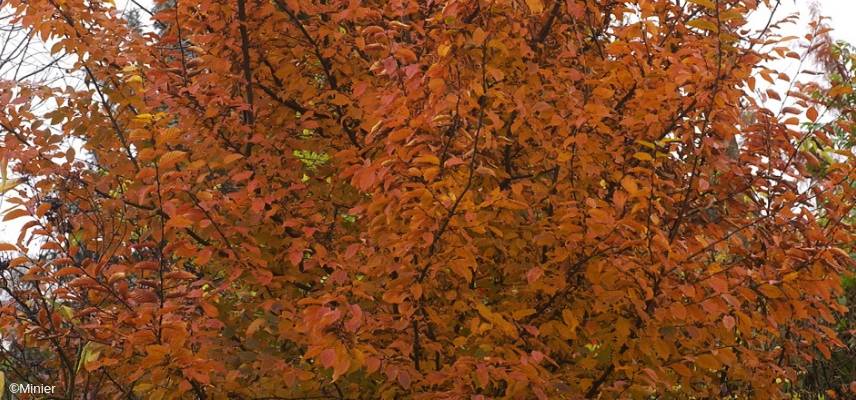
Nyssa sylvatica
The Nyssa sylvatica known as “Tupelo” or “Black Gum” is a hardy North American tree that displays a wide conical crown, beautifully starting from October. The ovate and glossy leaves of the tupelo, a fresh green in summer, declinate into soft green tones mixed with yellow before turning to an extremely bright orange-red. Planted on the banks of a pond or stream, alongside a bald cypress, a Ginkgo biloba, a Liquidambar, a purple maple, Hamamelis, and a few evergreen conifers in the background, you create a stunning cocktail!
The grey-brown bark of the tupelo adopts a curious scaly texture with age, reminiscent of a crocodile’s skin, another inhabitant of swamps. It requires a deep neutral to acidic soil, tolerates cold and wind well. Its weak point is that it dislikes transplanting as it needs to develop a deep taproot.
Discover other Shrubs with coloured autumn foliage
View all →Available in 0 sizes
Available in 1 sizes
Available in 1 sizes

Available in 1 sizes
Available in 1 sizes
Available in 1 sizes
Available in 1 sizes
Available in 2 sizes
Available in 1 sizes
Available in 1 sizes
Liquidambar
The Liquidambar styraciflua or American sweetgum is one of the most commonly planted trees in cities and parks for its autumn foliage. Its success primarily stems from its low requirements regarding soil and air quality, as well as salt spray. Although it prefers cool, heavy, and deep soils, it performs very well in temporarily dry soil during summer, even slightly calcareous or temporarily submerged soil in winter.
Choose a relatively young subject, grown in a container, which will likely take 2-3 years before producing significant shoots of 50 cm. Its pyramidal habit, of rare elegance, is particularly highlighted when planted in isolation or in alignment due to its well-straight trunk capable of reaching 20 m with a spread of 3 to 5 m. However, there are less imposing forms such as Worplesdon, which grows to 12 m high and 4 m wide, that after turning orange-yellow, adorns itself with a very chic dark red, while Aurea with its bright green leaves splashed with yellow, takes on orange-yellow, red, and pink hues before falling. The curious little brown lanterns that dot the starry foliage allow it to be distinguished from maples, whose fruits fly away like helicopters. Note that the foliage is alternate and aromatic, unlike that of maples. You can associate the sweetgum with other colourful trees in autumn such as Ginkgo Biloba, Cedrela sinensis Flamingo, Nyssa sylvatica, and the bald cypress which enjoy the same cool environments and deep soils. Maintain a distance of 5-8 m from other trees and 3 to 5 m within a mixed hedge.
To learn everything about this tree, discover the dedicated file:
“Liquidambar, American sweetgum: planting, pruning, maintenance”
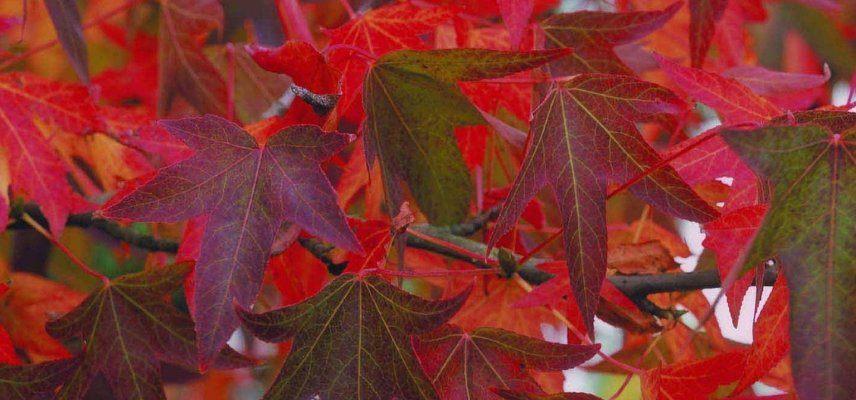
Rhus glabra laciniata
Here is a large bush measuring 3 m in all directions, featuring a feathery foliage that boasts extraordinary colours in autumn. This Laciniate Sumac, like a candelabrum, raises stems whose ends bear velvety wine-red torch-like fruit clusters that complement the brilliance of the autumn foliage, blending browns, gold, orange, crimson, and raspberry red. The summer flowering produces very melliferous greenish conical panicles, measuring 16 to 25 cm in length, amidst bluish-green foliage, which is whitish on the underside, reaching 35 to 50 cm long.
Plant this specimen that is compact and easy to care for in any soil, even calcareous and poor, dry or moist but well-drained, sheltered from the wind and in sunny exposure to fully enjoy its autumn blaze. Be careful, injury to its roots enhances its tendency to sucker. Install a bed of small Naples cyclamens that will form a beautiful mauve carpet in autumn.
To learn everything about Sumacs, discover the file:
“Sumac, Vinaigrier: planting, cultivation and maintenance”
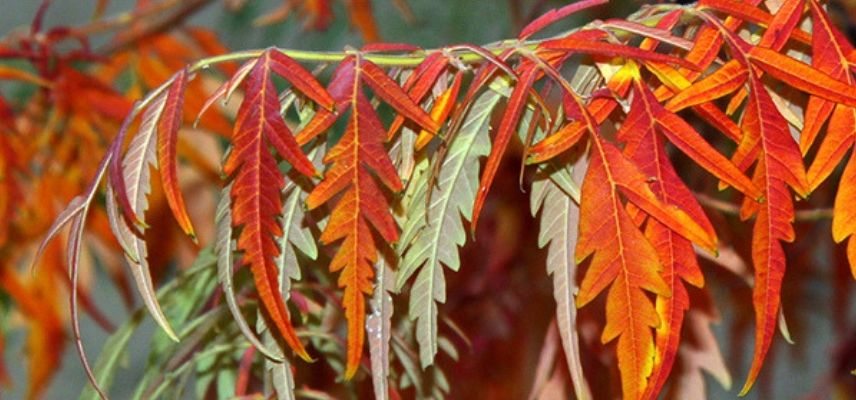
Viburnum 'The Naked Marquis'
The Viburnum Le Bois Marquis forms a round, evergreen or semi-evergreen bush, distinguished at Courson in 2007 for its interesting ornamental qualities throughout the year. After producing bronze shoots, its glossy green foliage borne on red stems is adorned with a generous white flowering in May-June before declinating into a palette of copper red and purple at the end of the season.
This beautiful bush, which loses some of its foliage in cold climates, fits perfectly within a varied country hedge, alongside very fragrant deciduous viburnums in early spring such as Viburnum x bodnantense or the lovely Viburnum sargentii Onondaga, with its finely cut foliage also offering stunning colourations and topped with a flowering of pink, dentate corymbs, or even alongside golden or purple Physocarpus. This dense and well-ramified variety also adapts very well to cultivation in large containers. Hardy, it grows in all rather cool soils.
To learn everything about Viburnums, discover the dedicated file:
“Viburnum – Planting, pruning and cultivating”
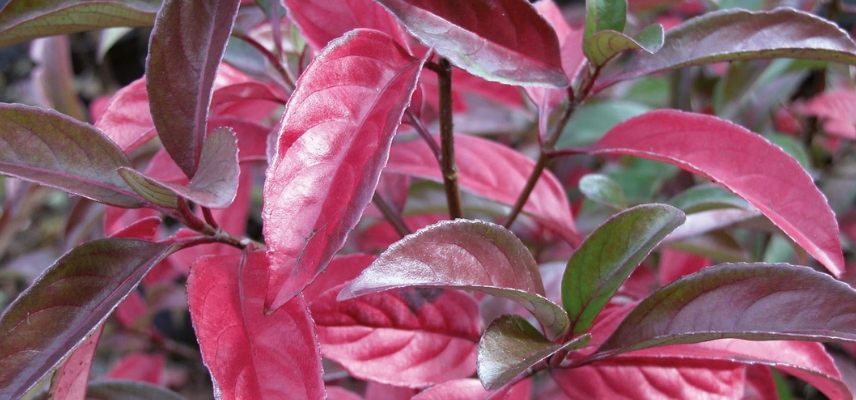
Ginkgo biloba or maidenhair tree
With such a name, one cannot help but think that the effect produced by the Ginkgo biloba in autumn is truly magnificent! Although the real reason for this name comes from the price paid to the English by Bressini, a botanist from the faculty of medicine garden in Montpellier, for its acquisition. A survivor from a family that disappeared 100 million years ago, this tree is one of the oldest known living fossils.
It no longer exists in the wild and owes its survival to its planting at the entrances of Chinese temples. Its light green fan-shaped leaves turn a bright yellow, resembling gold coins shimmering in the autumn wind. Be aware that female Ginkgo plants, which have a more spreading habit, produce rather foul-smelling yellow fruits, but only after 20 years. It is often male clones that are offered for sale, particularly the cultivar Blagon, which has a fastigiate habit limited to 2 m in diameter.
To learn everything about this tree, visit:
“Ginkgo biloba, planting, care and use”
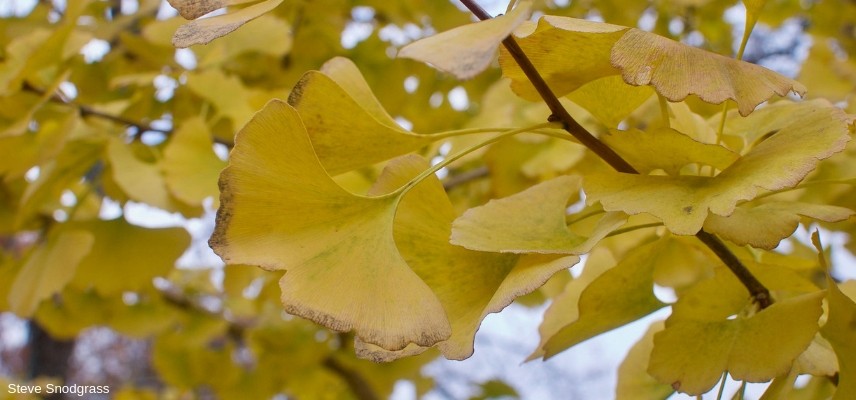
Cotinus coggygria
With a rounded silhouette and foliage, a fluffy flowering and nuanced colours, the smoke tree is a little gem for the garden. This Eurasian species is distinguished by an elegant rounded shape, measuring 2 to 5 m in diameter depending on the cultivar, twisted branches and ovate deciduous foliage. The latter evolves through the seasons in a rich palette even in the very popular purple cultivar ‘Royal Purple’, which turns red. Golden Spirit features golden foliage that shifts to coral orange red in autumn, while the bronze-purple vegetation of Grace ignites in translucent red. Old Fashioned, less known, will charm you with its springtime light green hues with turquoise reflections that transform into a gradient of chocolate burgundy pink in summer before bursting into a medley of fuchsia orange red.
The appeal of this small tree that is easy to grow also comes from its beige or pink fluffy flowering in June which has earned it the unique name of smoke tree. Compact cultivars (1.50 m tall and 1 m wide) such as Young Lady and Lilla are suitable for small gardens as well as container growing. They have large pink inflorescences and very beautiful autumn foliage. Plant them as solitary specimens, at the back of a border, or among summer-flowering perennials such as nepeta, stachys, lavenders, and monardas if the soil is cool.
To learn everything about Cotinus, discover the dedicated file:
“Cotinus, Smoke Tree – Planting, Pruning and Maintenance”
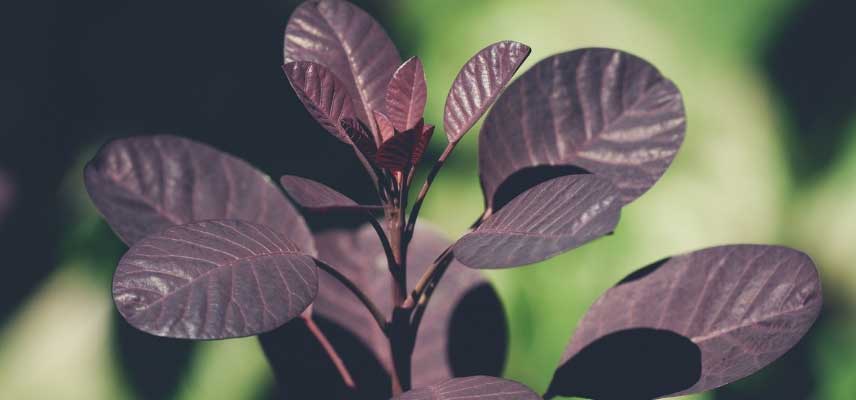
Taxodium distichum 'Pevé Minaret'
Apart from Larch, Sichuan Metasequoia, and Bald Cypress, scientifically known as Taxodium distichum, there are virtually no conifers with “deciduous” foliage. These are indeed needles or rather entire twigs that detach from the stems. These trees have the advantage of providing a stunning display in autumn that breaks the usual monotony of fir or spruce forests. The bald cypress grows in the swampy areas of Louisiana, with its feet in the water, having ingeniously found a way to breathe by raising stumps of roots above the water. The reflection in the water of its feathery spring-green needles, which turn to a golden hue in autumn, offers us a tableau rich in emotions. The cultivar Pevé Minaret gives us the opportunity to possess this unique specimen even in a small garden, on the banks of a pond, or in a container, provided that the soil is cool and deep, knowing that it will hardly exceed 3 m in height and 1 m in width.
For a more harmonious development of the plant, choose sheltered conditions, without excessive competition. Pair it with shrubs or perennials that enjoy the same cool growing conditions, such as Acorus gramineus Ogon, Astilbes, Sanguisorba, and of course ferns like Matteuccia struthiopteris, Onoclea sensibilis, or the famous Royal Fern in neutral to acidic, moist soil exposed to sun or partial shade.
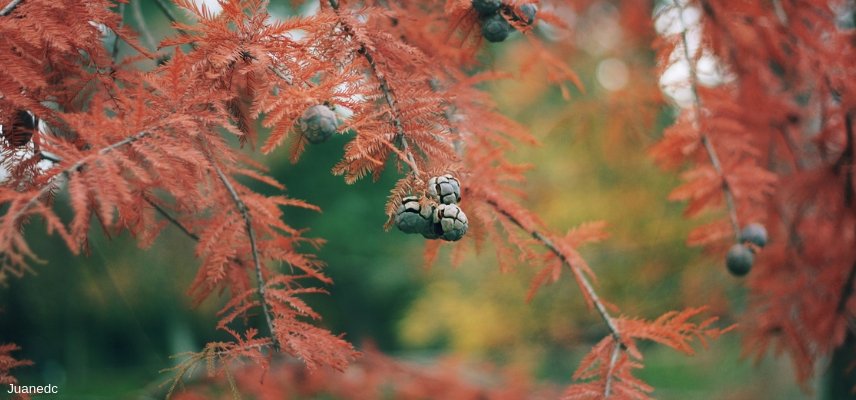
- Subscribe!
- Contents



































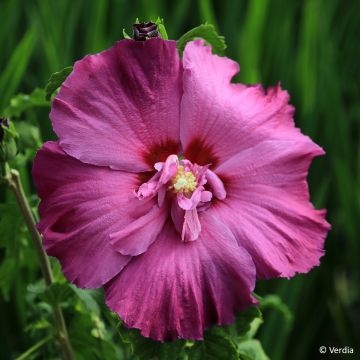
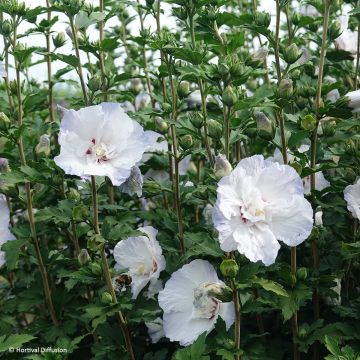


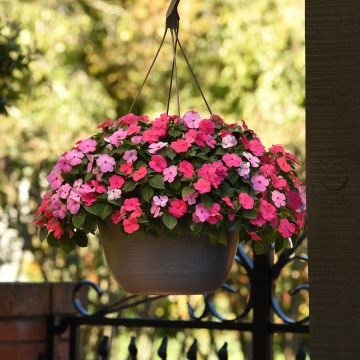
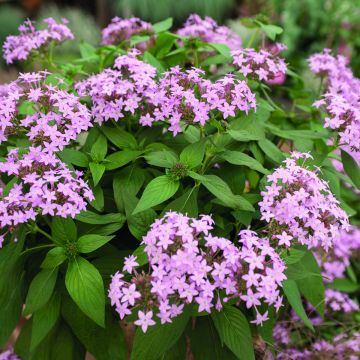
Comments